Live Cases Dashboard of the Legal Information Management and Briefing System (LIMBS)

- 16 Oct 2025
In News:
The Union Minister of State (Independent Charge) for Law and Justice recently inaugurated the Live Cases Dashboard under the Legal Information Management and Briefing System (LIMBS) at Shastri Bhawan, New Delhi. This marks a key advancement in the government's efforts to enhance transparency, efficiency, and coordination in legal case management.
About the Live Cases Dashboard
- A digital interface providing real-time visualisation of court cases involving the Government of India.
- Displays upcoming hearings — particularly cases scheduled within the next seven days — across the Supreme Court, High Courts, and other judicial bodies.
- Enables proactive decision-making and inter-ministerial coordination, helping departments prepare timely responses.
About LIMBS
- Web-based application designed to monitor litigation where the Union of India is a party.
- Launched for central ministries, departments, CPSUs and autonomous bodies in 2016, with a major upgrade in January 2020.
- Operates under the Department of Legal Affairs, Ministry of Law & Justice.
- Allows 24x7 access to government officials, advocates, arbitrators, nodal officers, and ministry users to upload and track case information.
- Offers a dashboard-based system providing a snapshot of legal matters to each stakeholder institution.
Significance
- The Government of India remains one of the largest litigants.
- LIMBS and its Live Cases Dashboard aim to reduce litigation burden in line with the vision of “Minimum Litigation, Maximum Governance”.
- Enhances transparency, accountability, and judicial efficiency.
- Promotes data-driven governance, timely legal response, and improved public resource management.
RBI’s Internal Working Group Recommendations on Liquidity Management Framework
- 11 Aug 2025
In News:
The Reserve Bank of India (RBI) recently released the recommendations of its Internal Working Group (IWG) constituted to review the Liquidity Management Framework (LMF), which has been operational since February 2020. The review seeks to enhance efficiency, transparency, and predictability in liquidity operations—crucial for ensuring smooth monetary policy transmission.
Liquidity Management Framework (LMF):
- Objective: To manage systemic liquidity and guide short-term interest rates in alignment with monetary policy objectives.
- Core Mechanism: Operates through the Liquidity Adjustment Facility (LAF)—using repo (liquidity injection) and reverse repo (liquidity absorption) operations.
- Corridor System: The policy repo rate sits at the middle of the interest rate corridor, while the Weighted Average Call Rate (WACR) serves as the operating target of monetary policy.
- Other Tools: Open Market Operations (OMO), Cash Reserve Ratio (CRR), Statutory Liquidity Ratio (SLR) for durable liquidity; and Standing Deposit Facility (SDF) for absorbing surplus liquidity.
Key Recommendations of the IWG
- WACR as Operating Target
- Recommendation: Continue using overnight WACR as the operating target.
- Rationale: WACR strongly correlates with collateralized overnight money market rates, making it reliable for transmitting policy signals across the system.
- Discontinuation of 14-day VRR/VRRR as Main Operation
- Recommendation: Replace 14-day Variable Rate Repo/Reverse Repo (VRR/VRRR) as the main liquidity management tool.
- Alternative: Manage transient liquidity primarily through 7-day repo/reverse repo operations and other operations (overnight to 14-day tenor) at RBI’s discretion.
- Rationale: 14-day auctions have witnessed lower participation, as banks prefer shorter-tenor instruments like SDF.
- Advance Notice for Liquidity Operations
- Recommendation: RBI should provide at least one-day advance notice for repo/reverse repo operations.
- Exception: Same-day operations may be undertaken in response to evolving liquidity shocks.
- Rationale: Predictability reduces market uncertainty and stabilizes money market rates.
- Variable Rate Auction Mechanism
- Recommendation: Continue using variable rate auctions for repo and reverse repo operations, including longer tenors.
- Rationale: Enhances price discovery and aligns market rates with liquidity conditions.
- Cash Reserve Ratio (CRR) Norms
- Recommendation: Continue with the 90% daily minimum maintenance requirement of CRR.
- Rationale: Ensures banks maintain sufficient reserves, preventing liquidity shortfalls.
- Durable Liquidity Tools
- Observation: Existing instruments under the LMF are sufficient to meet durable liquidity needs; no changes are required at this stage.
Key Terms:
- WACR (Weighted Average Call Rate): The average overnight interest rate at which banks borrow and lend funds, weighted by transaction volume; RBI’s operating target for monetary policy.
- Repo Rate: Rate at which RBI lends to banks against collateral to inject liquidity.
- Reverse Repo Rate: Rate at which RBI borrows from banks to absorb excess liquidity.
- VRR/VRRR: Auction-based repo/reverse repo operations, where rates are determined by market bids.
- SDF (Standing Deposit Facility): Tool for absorbing liquidity without collateral.
- CRR (Cash Reserve Ratio): Portion of deposits banks must maintain with RBI as liquid cash.
Significance of Recommendations
- For Monetary Policy: Reinforces the role of WACR in aligning short-term rates with policy stance.
- For Markets: Enhances predictability, reducing volatility in money markets.
- For Banks: Offers greater flexibility in managing short-term liquidity needs.
- For RBI: Provides operational flexibility to balance stability with market efficiency.
Disaster Management (Amendment) Bill, 2024
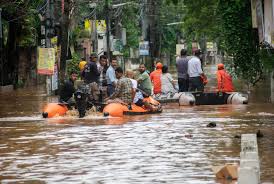
- 27 Mar 2025
In News:
The Parliament has passed the Disaster Management (Amendment) Bill, 2024, aiming to strengthen disaster response mechanisms.
Ministry: Home Affairs
Background
The Disaster Management Act, 2005 established a three-tier structure:
- National Disaster Management Authority (NDMA)
- State Disaster Management Authorities (SDMAs)
- District Disaster Management Authorities (DDMAs)
These bodies were responsible for disaster planning, mitigation, and response at national, state, and district levels respectively.
Key Amendments
1. Preparation of Disaster Management Plans
- Earlier: Executive Committees were responsible for preparing disaster plans.
- Now: NDMA and SDMA will directly prepare and approve national and state disaster management plans.
2. Expanded Functions of NDMA and SDMA
New responsibilities include:
- Periodic risk assessments, including risks from climate-related events.
- Technical guidance to lower-level authorities.
- Minimum standards of relief recommendations.
- Creation of disaster databases containing:
- Disaster risk profiles
- Fund allocations and expenditures
- Preparedness and mitigation strategies
- NDMA-specific roles:
- Assessment of state preparedness
- Post-disaster audits to evaluate response effectiveness
3. Urban Disaster Management Authorities (UDMAs)
- To be established in state capitals and municipal corporation areas.
- Composition:
- Chairperson: Municipal Commissioner
- Vice Chairperson: District Collector
- Additional members as per state government notification
- Responsible for urban disaster planning and implementation.
4. State Disaster Response Force (SDRF)
- States are empowered to establish SDRFs for specialized disaster response.
- Functions and service conditions to be defined by state governments.
5. Statutory Status to Key Committees
- National Crisis Management Committee (NCMC):
- Nodal body for major national disasters
- Chaired by the Cabinet Secretary
- High-Level Committee (HLC):
- Sanctions financial assistance to states
- Chaired by the concerned Union Minister
6. NDMA Staffing and Appointments
- NDMA can determine the number and type of officers and staff.
- Can appoint experts and consultants with prior central government approval.
Rationale Behind the Amendment
- Climate Change: Increased frequency of extreme weather events necessitates proactive strategies.
- Decentralization Gaps: States faced implementation challenges under the 2005 Act.
- Institutional Strengthening: Clearer roles for national and sub-national bodies.
- Technology and Data Integration: Emphasis on real-time data and performance audits.
Key Concerns and Criticism
- Centralization of Power:NDMA’s enhanced role may reduce state autonomy in disaster response.
- Overlap with State Authority:Potential encroachment on state disaster planning and fund utilization.
- Delayed Relief via NDRF:Increased central oversight may slow localized relief efforts.
- Omission of Emerging Threats:Excludes disasters like heatwaves from official definitions.
- Lack of State-Specific Relief Funds:Demand for region-focused financial provisions by states like Bihar.
Way Forward
- Ensure Federal Balance: Maintain cooperation between Centre and states.
- Update Definitions: Include climate-induced disasters like heatwaves.
- Transparent Funding Mechanism: Clear protocols for fund allocation and usage.
- Empower Local Bodies: Strengthen DDMAs and UDMAs through training and resources.
- Institutional Audits: Regular post-disaster audits to enhance future readiness.
1984 Bhopal disaster
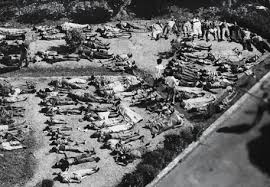
- 04 Dec 2024
In News:
Forty years after the Bhopal disaster on December 2-3, 1984, several hundred tonnes of toxic waste still remain around the ill-fated Union Carbide plant.
Overview of the incident:
The 1984 Bhopal disaster, one of the world’s worst industrial accidents, was caused by the release of methyl isocyanate (MIC) gas, which was a key component in the production of pesticides at the Union Carbide India Limited (UCIL) plant. However, the toxic legacy of the disaster extends far beyond MIC, with a range of other harmful substances lingering in the environment. These include:
- Methyl Isocyanate (MIC):Primary toxic agent: MIC is a highly toxic, volatile compound. Exposure can cause severe respiratory distress, eye irritation, pulmonary edema, and even death.
- Heavy Metals:The site of the plant is contaminated with various heavy metals, including:
- Mercury: Known to accumulate in the body and affect the nervous system, kidneys, and liver. Even small doses over time can lead to chronic health problems.
- Chromium: Exposure to high levels of chromium, particularly hexavalent chromium, is associated with lung cancer and damage to the respiratory system.
- Lead: A potent neurotoxin, lead can cause developmental delays, memory problems, and damage to the kidneys.
- Nickel: Can cause respiratory and lung cancers when inhaled in significant quantities.
- Copper: High levels of copper exposure can damage the liver and kidneys.
- Organic Compounds:Several organic chemicals were found at the site, including:
- Hexachlorobutadiene: A suspected carcinogen that can cause liver damage, kidney damage, and neurological issues upon exposure.
- Chloroform (Trichloromethane): Known for its effects on the central nervous system, exposure can lead to dizziness, loss of consciousness, and even death at high concentrations. It is also a possible carcinogen.
- Carbon Tetrachloride: A potent liver toxin, exposure can result in liver damage, cancer, and nervous system toxicity.
- Trichlorobenzene: These compounds are volatile and can spread through air and water, accumulating in fatty tissues and causing damage to organs like the liver and kidneys.
- Persistent Organic Pollutants (POPs):Some of the contaminants, particularly the organic compounds, are classified as persistent organic pollutants, which do not degrade easily in the environment. These can lead to:
- Cancer: Several of these compounds are carcinogenic.
- Neurological damage: Prolonged exposure can affect both the central and peripheral nervous systems.
- Reproductive and developmental disorders: Exposure has been linked to adverse effects on fertility and developmental health in humans.
- Environmental and Long-term Health Effects:
- Even decades later, contamination continues to affect the health of people living around the site, with high rates of cancers, birth defects, respiratory diseases, and other health issues. Water sources in the region remain unsafe due to heavy contamination with toxic chemicals. Persistent organic pollutants have been identified in local communities, indicating that the contamination continues to spread.
Key Highlights on India’s Horticulture and Plant Health Management Initiatives
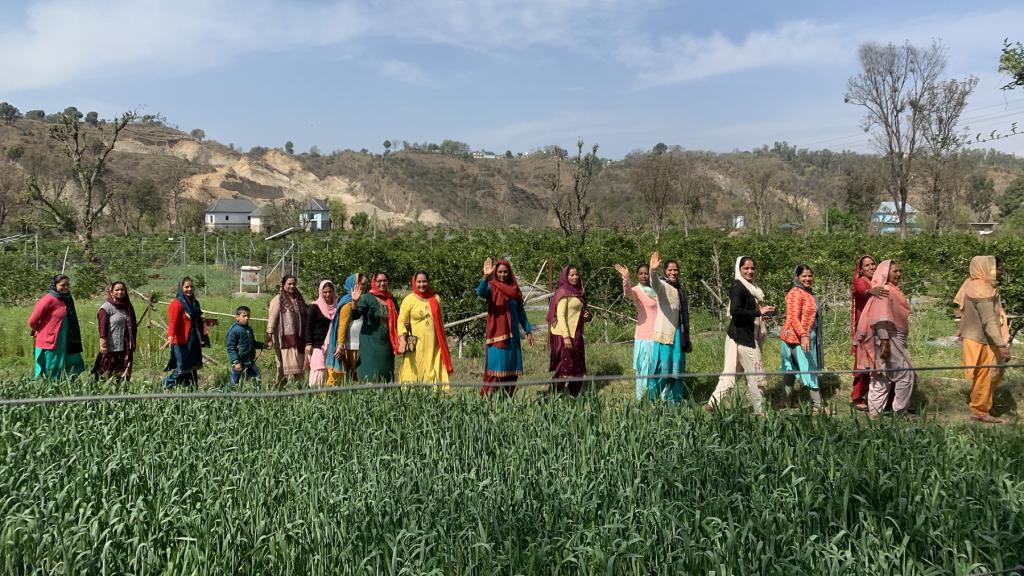
- 01 Dec 2024
In News:
Government of India and ADB sign $98 million loan to promote plant health management in India’s horticulture.
Key Highlights:
$98 Million Loan Agreement with ADB:
- India and the Asian Development Bank (ADB) signed a $98 million loan to enhance horticulture productivity and resilience.
- Objective: Improve farmers' access to certified, disease-free planting materials, which will increase crop yield, quality, and climate resilience.
- Focus Areas: The project aligns with India’s Atmanirbhar Clean Plant Programme (CPP), aiming to strengthen plant health management in horticulture.
Atmanirbhar Clean Plant Programme (CPP):
- Implemented under MIDH: The Clean Plant Programme is part of the Mission for Integrated Development of Horticulture (MIDH).
- Goal: To provide virus-free, high-quality planting materials to farmers, boosting horticultural crop yields and promoting climate-resilient varieties.
- Implementation Period: 2024-2030, with 50% financial support from ADB.
- Key Components:
- Establishment of 9 Clean Plant Centers (CPCs) with state-of-the-art diagnostic, therapeutic, and tissue culture laboratories.
- Certification Framework: Developing a regulatory framework under the Seeds Act 1966 to certify clean plants.
- Support to Nurseries: Infrastructure development for large-scale nurseries.
- Significance: The programme strengthens India's self-reliance in horticulture and enhances adaptability to climate change impacts.
Mission for Integrated Development of Horticulture (MIDH):
- Nodal Ministry: Ministry of Agriculture and Farmers Welfare.
- Focus: Holistic development of the horticulture sector, including fruits, vegetables, mushrooms, spices, and more.
- Funding Pattern:
- General States: 60% by Government of India (GoI), 40% by State Governments.
- North-Eastern and Himalayan States: 90% by GoI.
Horticulture Sector at a Glance:
- Contribution to Agricultural GDP: Accounts for 33% of the gross value.
- Land Coverage: Occupies 18% of agricultural land in India.
- Global Standing: India is the second-largest producer of fruits and vegetables globally.
- Surpassing Food Grains: Horticulture production exceeds food grain production, occupying much less land (25.66 million hectares vs. 127.6 million hectares for food grains).
Key Benefits of the CPP:
- Climate Resilience: Promotes climate-resilient plant varieties and helps farmers adapt to climate change.
- Innovation: Encourages the use of advanced testing techniques and builds institutional capacity.
- Long-term Impact: Expected to improve sustainability, productivity, and the economic well-being of farmers.
Additional Horticulture Initiatives:
- CHAMAN (Horticulture Assessment using Geo-informatics): A programme to estimate area and production of horticultural crops using scientific methods.
- Kisan Rail Services: Facilitates transportation of perishable horticultural products like fruits and vegetables.
- Capital Investment Subsidy Scheme: By the National Horticulture Board to support the sector’s growth.
Wayanad’s New X-Band Radar
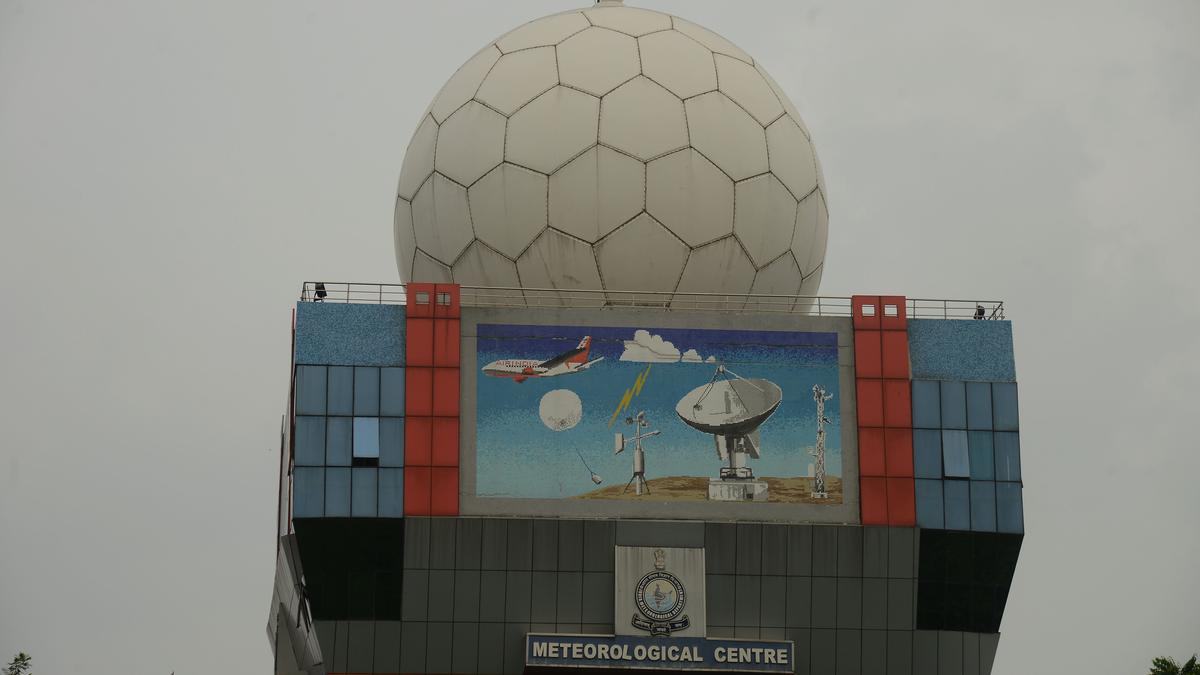
- 14 Oct 2024
In News:
- Following devastating floods and landslides in July 2024 that resulted in over 200 fatalities in Wayanad, Kerala, the Union Ministry of Earth Sciences approved the installation of an X-band radar to enhance monitoring and early warning systems.
- Impact of Events: The floods were exacerbated by heavy rains, leading to significant debris flows and landslides, highlighting the need for advanced meteorological tools.
What is Radar?
- Definition: Radar stands for "Radio Detection and Ranging." It uses radio waves to determine the distance, velocity, and characteristics of objects.
- Functioning: A transmitter emits radio signals that reflect off objects, returning to a receiver for analysis. This technology is crucial in meteorology for monitoring weather patterns.
X-Band Radar Specifics
- Operating Frequency: X-band radar operates at 8-12 GHz, corresponding to wavelengths of 2-4 cm. This allows it to detect smaller particles, such as raindrops and soil.
- Advantages: The shorter wavelengths provide higher resolution images but have a limited range due to faster signal attenuation.
- Applications: In Wayanad, the radar will monitor particle movements like soil, enabling timely landslide warnings through high temporal sampling.
India’s Radar Network
- Historical Context: India has utilized radar for meteorological purposes since the early 1950s. The first indigenous X-band radar was established in 1970.
- Current Infrastructure: India operates both X-band and S-band radars (2-4 GHz) for various meteorological functions. The X-band network includes storm detection and wind-finding capabilities.
- Future Plans: The Indian government plans to add 56 more Doppler radars under the ?2,000-crore "Mission Mausam," enhancing weather forecasting capabilities across the country.
NISAR Satellite
- Collaboration: NISAR (NASA-ISRO Synthetic Aperture Radar) is a joint satellite project between NASA and ISRO, set to launch in 2025.
- Capabilities: It will feature L-band and S-band radars to monitor Earth’s landmass changes, further supporting environmental monitoring and disaster management.
EXERCISE AIKYA
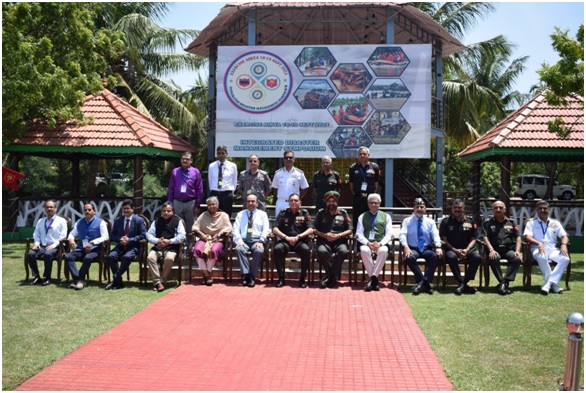
- 21 Sep 2024
In News:
The National Disaster Management Authority (NDMA), in partnership with the Indian Army's Southern Command and the Tamil Nadu State Disaster Management Authority (TNSDMA), recently conducted "EXERCISE AIKYA" in Chennai. This two-day Integrated Symposium and Table Top Exercise (TTEx) aimed to bolster disaster preparedness and response among key stakeholders across Peninsular India.
Key Highlights:
- Objective: "Aikya," meaning "Oneness" in Tamil, sought to unify India’s disaster management community by enhancing collaboration and preparedness.
- Participants: The exercise involved representatives from:
- Six southern states/UTs: Tamil Nadu, Kerala, Karnataka, Andhra Pradesh, Telangana, and Puducherry.
- Central ministries related to disaster management.
- State Disaster Management Authorities (SDMAs).
- Armed forces, including the Indian Army, Navy, and Air Force.
- Response agencies such as the NDRF, Indian Coast Guard, CRPF, CISF, and Railways.
- Early warning agencies including the IMD, NRSC, INCOIS, CWC, and FSI.
- Research institutions like NIDM, NIOT, IIT Madras, and DAE, with Prof. CVR Murty of IIT Madras serving as the Exercise Mentor.
- Focus Areas: The exercise simulated various emergency situations, covering:
- Tsunamis, landslides, floods, cyclones, industrial incidents, and forest fires.
- Recent disaster events in Tamil Nadu, Wayanad, and Andhra Pradesh.
- Discussions: Participants engaged in discussions about:
- Leveraging technology and AI for disaster management.
- Economic impacts of disasters.
- Vulnerabilities specific to the Peninsular region.
- Strategies for improving response times.
Future Plans
"EXERCISE AIKYA" marks a crucial step towards strengthening India’s disaster management framework. The NDMA and the Southern Command plan to conduct similar exercises with other military commands and institutions, including the Army War College and Naval War College, to further enhance national disaster preparedness and response capabilities.
Operation Sadbhav
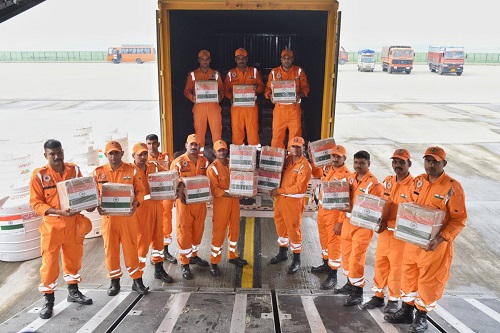
- 15 Sep 2024
In News:
India has launched Operation Sadbhav to deliver crucial humanitarian aid to Myanmar, Laos, and Vietnam, all of which have been devastated by Typhoon Yagi. This powerful storm, the most severe in Asia this year, has led to extensive flooding and widespread destruction across the affected countries.
Relief Efforts:
In response to the crisis, India has mobilized a significant amount of aid. The Indian naval ship INS Satpura has transported 10 tonnes of relief supplies, including dry rations, clothing, and medicines, to Myanmar. Concurrently, the Indian Air Force has dispatched a military transport aircraft with 35 tonnes of aid to Vietnam and an additional 10 tonnes to Laos. The aid includes essential items such as generators, water purification systems, hygiene kits, mosquito nets, blankets, and sleeping bags, which are crucial for addressing immediate needs during this emergency.
India's Proactive Approach:
Operation Sadbhav highlights India's proactive approach to humanitarian assistance and disaster relief, emphasizing its role as a leading responder in the region. This initiative reflects India's commitment to providing support to its neighboring countries in times of crisis and aligns with its broader 'Act East Policy,' which aims to strengthen relations with ASEAN member states through practical assistance and cooperation.
Strategic Importance:
The operation also underscores India's strategic goals of enhancing regional stability and reinforcing its position as a reliable partner in disaster management. By providing timely aid, India demonstrates its dedication to supporting regional stability and contributing to international humanitarian efforts.
Global Recognition and Cooperation:
India's response to Typhoon Yagi has received international acknowledgment for its effectiveness and promptness. The coordination of these relief efforts highlights the importance of global solidarity in addressing humanitarian crises and building resilience in disaster-affected regions.
Conclusion:
Operation Sadbhav is a clear demonstration of India's commitment to timely and substantial humanitarian assistance. It not only showcases India's proactive diplomacy but also strengthens its ties with ASEAN nations through meaningful cooperation in times of adversity. The ongoing relief efforts are a testament to India's role as a responsible global stakeholder in disaster response and recovery.
Disaster Management (Amendment) Bill, 2024
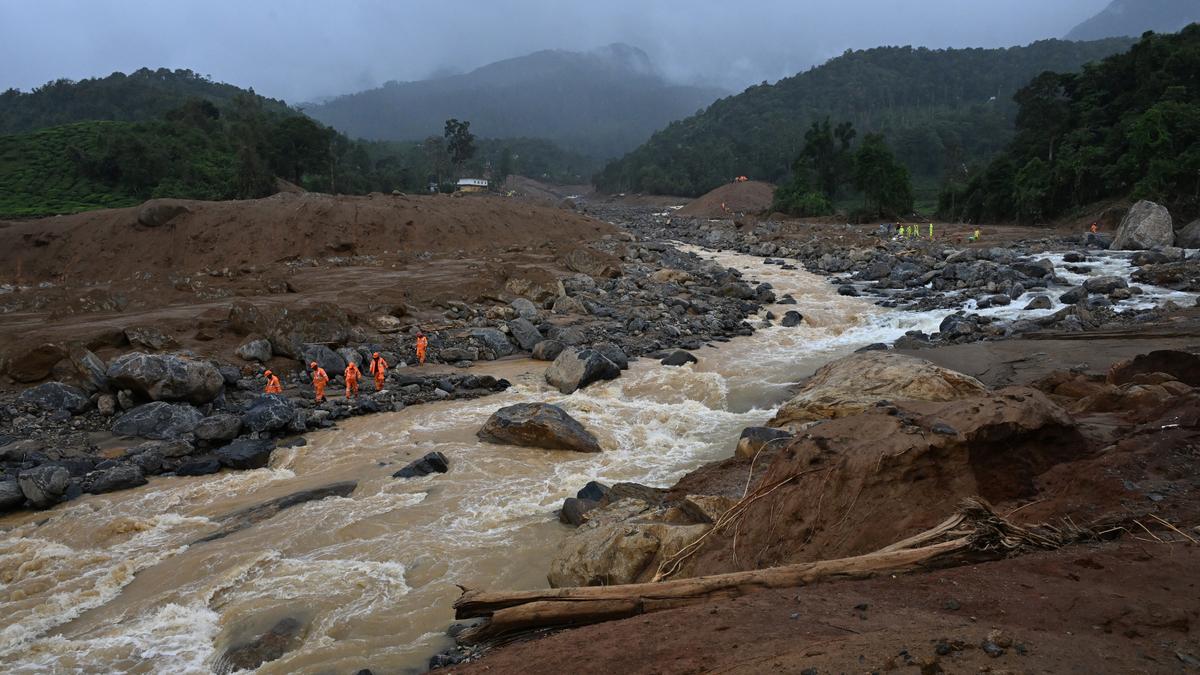
- 05 Sep 2024
In News:
On August 1, 2024, the central government introduced the Disaster Management (Amendment) Bill in the Lok Sabha. This Bill, aimed at amending the existing Disaster Management Act of 2005, has been proposed in response to the increasing frequency of climate-induced disasters. However, the Bill’s provisions have raised concerns about further centralisation of disaster management processes, which may complicate and delay disaster response efforts.
Centralisation Concerns
The Bill continues the trend of centralising disaster management, a feature already prevalent in the 2005 Act. It grants statutory status to existing bodies like the National Crisis Management Committee (NCMC) and the High-Level Committee (HLC), potentially complicating the disaster response process. This centralised approach has previously led to delays, such as the late disbursement of funds to Tamil Nadu and Karnataka, contrary to the Act's intended rapid response.
Proposed Changes
Strengthening NDMA and SDMAs: The Bill aims to bolster the role of the National Disaster Management Authority (NDMA) and State Disaster Management Authorities (SDMAs) by having them prepare disaster management plans directly. It also introduces Urban Disaster Management Authorities (UDMAs) for state capitals and major cities, although these bodies may face challenges due to insufficient financial devolution.
Database and Staffing: The Bill mandates the creation of comprehensive disaster databases at national and state levels and allows the NDMA to appoint its own staff, subject to central government approval.
Issues with the Current Definition of ‘Disaster’
Heatwaves Exclusion: On July 25, 2024, the Minister of State for Science, Technology, and Earth Sciences announced that heatwaves will not be classified as a notified disaster under the Act. This decision aligns with the 15th Finance Commission’s view and maintains a restricted list of disasters eligible for assistance, which includes cyclones, droughts, earthquakes, and floods, but excludes climate-induced phenomena like heatwaves.
Inadequate Definition: The existing definition of "disaster" in the Act and the Bill remains narrow, failing to encompass climate-induced events such as heatwaves, which are increasingly recognized globally as significant disasters. Data from the India Meteorological Department shows a record number of heatwave days and related fatalities, highlighting the need for a broader disaster definition.
Critical Issues
Central-State Dynamics: The Bill’s centralisation raises questions about the balance of power between central and state governments. There are concerns that states will remain heavily dependent on central funds, complicating disaster management and response.
Lessons Unlearned: Despite being an update to the 2005 Act, the Bill appears to overlook past shortcomings, including delays in financial preparedness and response. A focus on cooperative federalism and effective disaster management should prioritize practical solutions over a central versus state blame game.
Future Directions: Addressing the challenges of climate-induced disasters and ensuring effective financial and operational preparedness requires revisiting and refining the disaster management framework. Emphasizing cooperative federalism and proactive disaster management strategies will be crucial in improving disaster resilience and response in the face of escalating climate risks.
Can Kerala access funds from the Loss and Damage Fund?
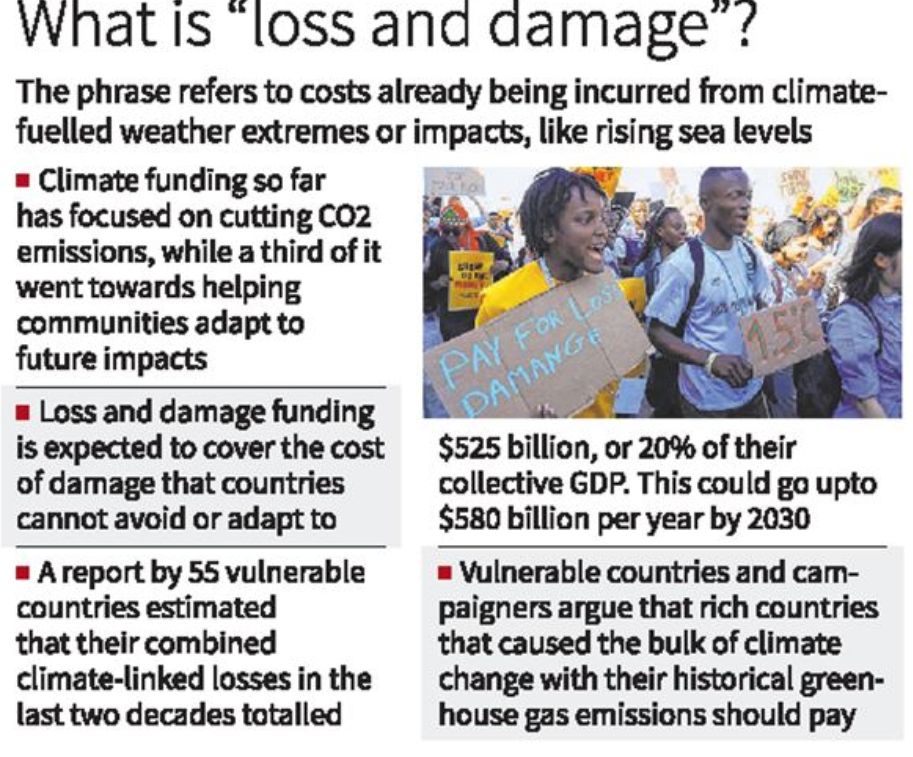
- 06 Sep 2024
In light of the recent landslides in Kerala’s Wayanad district, the question arises whether subnational entities like Kerala can access the United Nations Framework Convention on Climate Change (UNFCCC)’s Loss and Damage Fund (LDF). While the need for compensation is clear, the process of accessing climate funds is complex.
What is the Loss and Damage Fund (LDF)?
- Established at COP27 in Egypt, the LDF aims to support regions experiencing economic and non-economic losses from climate change.
- Includes extreme weather events and slow-onset processes like rising sea levels.
- Managed by a Governing Board, with the World Bank as the interim trustee.
- The Board is developing mechanisms for resource access, such as direct access, small grants, and rapid disbursement options.
- Concerns exist about the speed and accessibility of climate funds, which may affect their effectiveness in immediate disaster recovery.
What has been India’s Role?
- India faced over $56 billion in weather-related damages from 2019 to 2023. Despite this, its National Climate Action Policy prioritizes mitigation over adaptation, leading to limited engagement in Loss and Damage dialogues at COP meetings.
- High vulnerability in certain regions could benefit from active participation in these dialogues.
- India needs a clear legal and policy framework for climate finance, focusing on locally led adaptation, which is vital for vulnerable communities.
- The Union Budget 2024’s introduction of a climate finance taxonomy raises hopes for increased international climate finance.
- Without clear guidelines for accessing loss and damage funds, frontline communities remain at risk.
- India should advocate for decentralized fund disbursement methods from the LDF, contrasting with the centralized systems used for other climate funds.
What have been State Interventions?
- State governments, such as Kerala, often bear the financial burden of disaster recovery.
- Example: The Rebuild Kerala Development Programme post-August 2018 floods, funded by World Bank and KfW Development Bank loans.
- Focused on infrastructure reconstruction, including roads and bridges.
- Lack of a standardized method for comprehensive disaster damage assessments, especially for slow-onset events, may mean significant loss and damage needs go unassessed.
- This could hinder India’s ability to access the LDF.
- The Wayanad situation highlights broader challenges in accessing and managing climate finance for loss and damage.
- A clearer domestic policy framework focusing on locally led adaptation and defined guidelines for accessing loss and damage funds is needed for better climate change protection.
Shallow Aquifer Management (SAM)
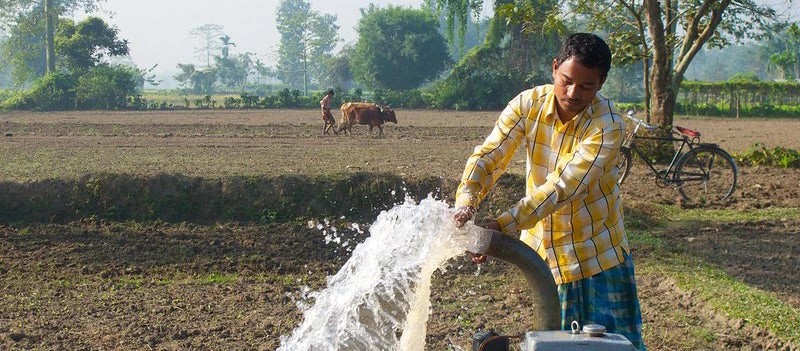
- 24 May 2024
Why is it in the News?
Securing water for the future as the mantra, the Greater Hyderabad Municipal Corporation (GHMC) in the latest intervention has taken up the Shallow Aquifer Management (SAM) model on a pilot basis in the city.
What is an Aquifer?
- An aquifer is a body of porous rock or sediment that is saturated with groundwater.
- Groundwater enters an aquifer through precipitation that seeps down through the soil.
- It can then move through the aquifer and emerge at the surface via springs and wells.
- Aquifers are classified into two types:
- Deep Aquifers
- Shallow Aquifers
What is Shallow Aquifer Management (SAM)?
- In 2022, the Atal Mission for Rejuvenation and Urban Transformation (AMRUT) launched a Shallow Aquifer Management (SAM) pilot program in ten cities across nine states:
- Bengaluru (Karnataka), Chennai (Tamil Nadu), Dhanbad (Jharkhand), Gwalior (Madhya Pradesh), Hyderabad (Telangana), Jaipur (Rajasthan), Kolkata (West Bengal), Pune and Thane (Maharashtra), and Rajkot (Gujarat).
- The SAM pilot is overseen by the National Institute of Urban Affairs (NIUA) and supported by the Advanced Center for Water Resources Development and Management (ACWADAM) in Pune and the Biome Environmental Trust in Bengaluru.
- Under SAM, the Greater Hyderabad Municipal Corporation (GHMC) has identified five municipal parks for implementation this year.
How does it work?
- The project involves drilling shallow water injection borewells to depths of 100-120 feet to extract water from shallow aquifers.
- This process helps recharge the underlying layers during rainfall events by collecting water from the surrounding watershed and directing it through recharge pits.
- Consequently, underground water layers are replenished, leading to a rise in the water table.
Copernicus Emergency Management Service (CEMS) Programme

- 21 May 2024
Why is it in the News?
As part of a multi-agency effort to locate a helicopter carrying Iranian President Ebrahim Raisi that crashed in East Azerbaijan province recently, the European Union activated its emergency satellite mapping service at Iran’s request as adverse weather and darkness hampered search and rescue operations.
What is the Copernicus Emergency Management Service (CEMS)?
- The Copernicus Emergency Management Service (CEMS) is part of the Copernicus Programme, the European Union’s Earth Observation Programme.
- CEMS is managed directly by the European Commission via the Joint Research Centre.
- CEMS supports all actors involved in the management of natural or manmade disasters by providing geospatial data and images for informed decision-making.
- CEMS constantly monitors Europe and the globe for signals of an impending disaster or evidence of one happening in real-time.
- The service immediately notifies national authorities of their findings or can be activated on-demand and offers to provide them with maps, time series or other relevant information to better manage disaster risk.
- CEMS products are created using satellite, in-situ (non-space) and model data.
- CEMS comprises two components:
- On-demand Mapping
- Early Warning & Monitoring
- Copernicus EMS Early Warning and Monitoring offers critical geospatial information at European and global levels through continuous observations and forecasts for floods, droughts and forest fires.
- It includes the European Flood Awareness System (EFAS), the European Forest Fire Information System (EFFIS) and the European Drought Observatory (EDO).
- It also links to the global versions of the early warning systems and the Global Disaster Alert and Coordination System (GDACS) for tropical cyclones.
- These versions cover the overseas areas of Europe that are often affected by extreme events.
- The service is provided free of charge to all users either in rush mode, for emergency management activities that require immediate response and/or non-rush mode, to support emergency disaster management activities not related to immediate response, analysing pre-disaster risk assessment and population and asset vulnerability or post-disaster recovery and reconstruction.
- It can be activated only by designated authorised users.
Glacial Lake Outburst Floods
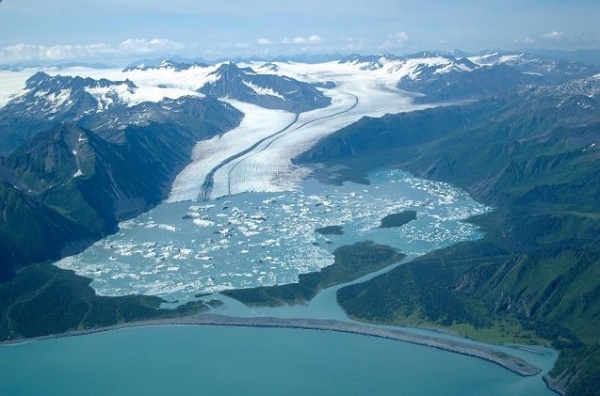
- 04 Apr 2024
Why is it in the News?
Recently, the Uttarakhand government has constituted two teams of experts to evaluate the risk posed by five potentially hazardous glacial lakes in the region.
What is Glacial Lake Outburst Flood (GLOF)?
- A GLOF denotes the sudden release of meltwater from a moraine or ice-dammed glacial lake, typically due to dam failure.
- These events pose significant hazards, often resulting in catastrophic flooding downstream, leading to substantial loss of life and property.
- GLOF can be triggered by several factors, including earthquakes, heavy rains, and avalanches.
Key Features of GLOFs:
-
- Sudden water releases.
- Rapid occurrences lasting hours to days.
- Large downstream river discharges.
Threats Posed by GLOFs in the Himalayan Regions:
- Climate Change Impact: Climate change-induced glacier melt accelerates the formation or expansion of glacial lakes, heightening the risk of GLOFs.
- Vulnerability of Moraines and Dams: Glacial lakes situated behind unstable moraines or natural dams are prone to breaching, as evidenced by events like the Kedarnath floods in 2013.
- Immediate Flood Risks: Abrupt water releases trigger massive floods, causing extensive damage to homes, and infrastructure, and triggering landslides and sedimentation.
Mitigation Strategies for GLOFs:
- Risk Assessment and Zonation: Identify high-risk areas and implement necessary mitigation measures, including mapping and modeling, as outlined in the 'Guidelines for Preparation of Disaster Management Plans for Glacial Lake Outburst Floods (GLOF)'.
- Early Warning Systems: Establish monitoring networks with sensors to detect changes in glacial lakes and provide timely warnings to vulnerable communities.
- Utilization of Technology: Leverage remote sensing and GIS-based tools for monitoring glacial lakes and surrounding areas.
- Regulation of Construction: Implement construction codes to regulate development in high-risk zones, exemplified by the 'Guidelines for the Construction of Earthquake Resistant Buildings' developed by the NDMA.
- Capacity Building Initiatives: Enhance skills and resources through training programs conducted by institutions like the National Centre for Disaster Management, in collaboration with the private sector and NGOs.
- Infrastructure Development: Invest in infrastructure to redirect potential floodwaters away from communities and critical infrastructure.
District Election Management Plan
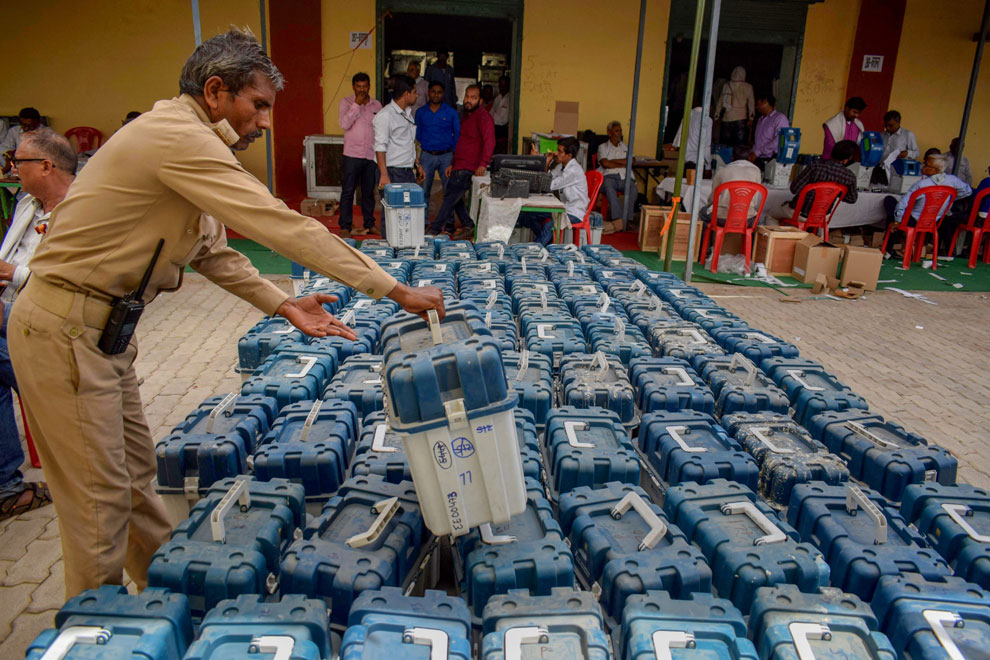
- 26 Mar 2024
Why is it in the News?
Effective execution of elections demands thorough planning, where a crucial aspect is the meticulous formulation and implementation of the District Election Management Plan (DEMP).
About the District Election Management Plan (DEMP):
- The District Election Management Plan (DEMP) is a comprehensive document designed to ensure the smooth conduct of elections, employing statistics and analysis.
- According to the Election Commission of India, the DEMP must be prepared at least six months before the tentative poll day.
- Collaboration among election officials, administrative authorities, law enforcement agencies, etc., is crucial for the execution of the DEMP.
Key components of the DEMP include:
- District Profile: A district profile providing foundational electoral strategy, featuring political maps outlining constituencies, key demographic and infrastructure statistics, and a brief on the district’s administrative setup and socio-economic features.
- Polling Stations: Detailed strategies for enhancing the availability and accessibility of polling stations, ensuring essential facilities such as ramps, electricity, lighting, drinking water, toilets, and internet connectivity.
- Special Attention to PwD and Senior Citizens: Addressing the requirements of voters with disabilities and senior citizens through dedicated help desks, round-the-clock control rooms, home voting options, and advanced postal ballot voting for essential service personnel.
- Systematic Voters’ Education and Electoral Participation (SVEEP) Plan: Integration of the Systematic Voters’ Education and Electoral Participation (SVEEP) plan, focused on increasing electoral participation.
-
- Planning, training, welfare, and deployment strategies for election personnel, along with training initiatives for district-level teams to enforce the Model Code of Conduct (MCC) and equip all election personnel with the necessary skills and knowledge.
Regarding Electronic Voting Machines (EVMs)?
- Management of Electronic Voting Machines (EVMs) is vital to uphold the integrity of the electoral process, encompassing strategies for secure storage, availability, transportation, and maintenance of both EVMs and Voter Verifiable Paper Audit Trails (VVPATs).
- The District Election Management Plan (DEMP) contributes to enhancing the voting process by ensuring its organization and accessibility to all voters.
- Furthermore, the principles employed in the DEMP, such as meticulous planning, collaboration, and transparency, offer valuable insights applicable beyond elections, providing lessons for broader governance.
- The emphasis on advanced planning, data-driven decision-making, and stakeholder collaboration highlighted by the DEMP is instrumental in addressing challenges effectively.
Nilgiris Forest Fire
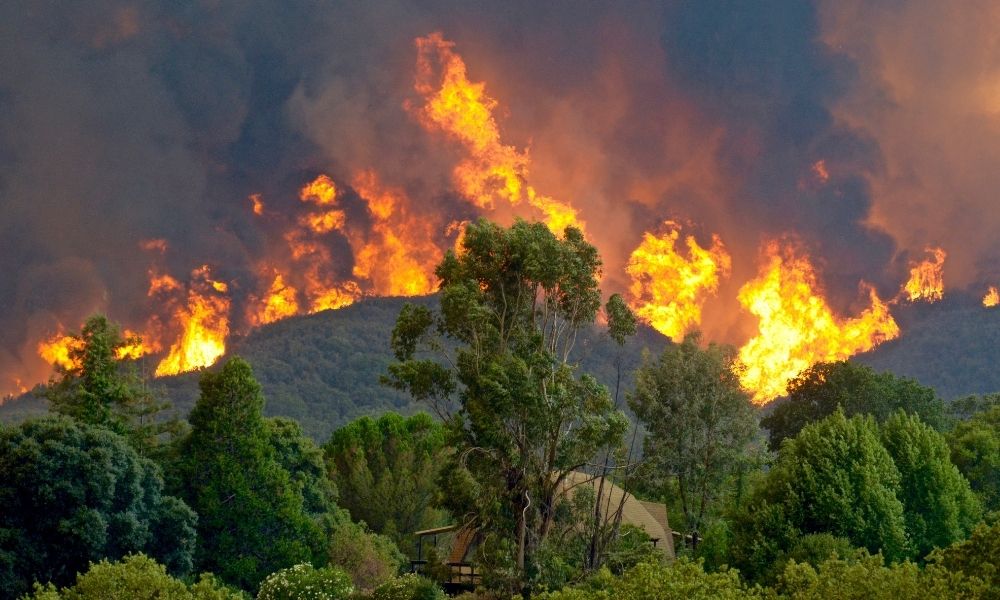
- 19 Mar 2024
Why is it in the News?
The Indian Air Force (IAF) has deployed its assets to aid the local administration in dousing the raging forest fire that started recently in Tamil Nadu's Nilgiris district.
What is a Forest Fire?
- A forest fire, also known as a wildfire, is an uncontrolled fire that occurs in forested areas or other vegetated landscapes.
- These fires can spread rapidly, fueled by dry vegetation, high temperatures, low humidity, and strong winds.
- Once ignited, they can quickly grow in size, consuming vast areas of land, vegetation, and wildlife habitat.
- Wildfires pose significant risks to human safety, property, ecosystems, and air quality.
Causes of Forest Fire:
- Forest fires are caused by Natural causes as well as man-made causes.
- Natural causes: Many forest fires start from natural causes such as lightning which sets trees on fire.
- However, rain extinguishes such fires without causing much damage. High atmospheric temperatures and dryness (low humidity) offer favorable circumstances for a fire to start.
- Man-made causes: Fire is caused when a source of fire like naked flame, cigarette or bidi, electric spark, or any source of ignition comes into contact with inflammable material.
- Natural causes: Many forest fires start from natural causes such as lightning which sets trees on fire.
Types of forest fire:
- Surface Fire: This type of forest fire spreads primarily along the ground, consuming surface litter such as dry leaves, twigs, and grasses.
- The flames engulf the forest floor as they advance.
- Underground Fire: Underground fires, also known as muck fires, burn with low intensity beneath the surface, consuming organic matter and surface litter.
- These fires often spread slowly and can continue burning for months, destroying vegetative cover.
- Ground Fire: Ground fires occur in sub-surface organic fuels such as duff layers under forest stands or organic soils of swamps.
- They burn herbaceous growth and organic matter beneath the surface, often transitioning from smoldering underground fires.
- Crown Fire: Crown fires involve the burning of the crowns of trees and shrubs, sustained by a surface fire.
- They are particularly hazardous in coniferous forests, where resinous material can fuel intense flames.
Frequency of Forest Fire in India:
- Seasonality: Forest fires in India are prevalent from November to June, with peak activity typically occurring in April and May, encompassing both small-scale and large-scale incidents.
- Vulnerability: The 2019 India State of Forest Report (ISFR) highlighted that over 36% of the country's forest cover is susceptible to frequent fires, with 4% categorized as extremely prone and an additional 6% as highly fire-prone.
- Affected Regions: Dry deciduous forests experience severe fires, with Northeast India, Odisha, Maharashtra, Jharkhand, Chhattisgarh, and Uttarakhand being particularly vulnerable areas.
- Recent Incidents: Notable fire outbreaks occurred in 2021 across Uttarakhand, Himachal Pradesh, Nagaland-Manipur border, Odisha, Madhya Pradesh, and Gujarat, including wildlife sanctuaries.
- In 2023, Goa faced large bushfires under investigation for potential human causes.
- 2024 Trends: Recent reports indicate heightened fire activity in Mizoram, Manipur, Assam, Meghalaya, and Maharashtra, with increased incidents along the Konkan belt, coastal Gujarat, southern Rajasthan, Madhya Pradesh, coastal Odisha, Jharkhand, Andhra Pradesh, Karnataka, and Tamil Nadu.
- Southern India: While Andhra Pradesh and Telangana witness fire incidents, forests in southern India, primarily evergreen or semi-evergreen, are less prone to fires, although Tamil Nadu has experienced recent wildfires.
Reasons Behind This Year's Fires:
- Climate Factors: Dry conditions, high temperatures, clear skies, and light winds have fueled forest fires in southern India.
- Temperature Trends: February 2024 was exceptionally hot, making it the hottest month in southern India since 1901.
- Heat Accumulation: Above-average temperatures over the past months led to a buildup of heat, drying out biomass in forests ahead of the summer season.
- Excess Heat Factor: Western Andhra Pradesh and Karnataka are experiencing higher-than-normal EHF values, increasing the risk of heat waves.
- Mild Aridity: Lack of rain and high temperatures have classified most districts in southern India as mildly arid.
New waste management technology could improve life in rural India
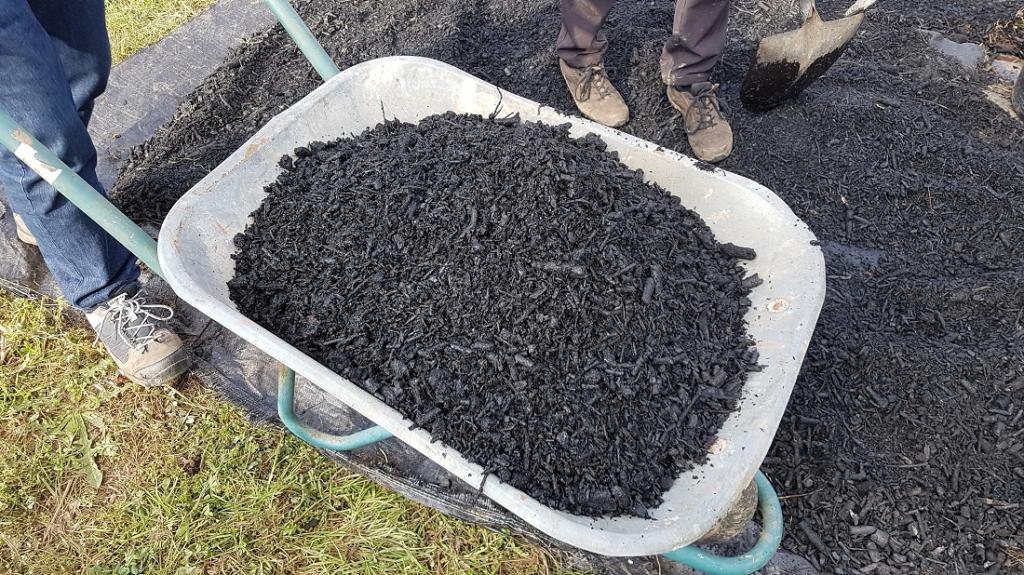
- 29 Feb 2024
Why is it in the News?
A new waste management technology that allows pyrolysis at a community level could help rural Indians cut indoor air pollution, improve soil health, and generate clean power, a recent study has claimed.
What is BioTRIG?
- BioTRIG represents a novel waste management technology centered around pyrolysis, poised to mitigate indoor air pollution, enhance soil quality, and foster clean energy generation across rural India.
- This community-oriented pyrolysis system is ingeniously crafted to utilize locally generated waste, offering a sustainable solution tailored to village environments.
- The innovative process yields three valuable by-products: bio-oil, syngas, and biochar fertilizer, presenting multifaceted benefits for rural communities, from cleaner energy sources to enhanced agricultural productivity.
- Moreover, the self-sustaining nature of BioTRIG enables the utilization of syngas and bio-oil to fuel subsequent pyrolysis cycles, with excess electricity catering to local energy needs, fostering self-reliance and sustainability.
- By harnessing the clean-burning properties of bio-oil and the soil-enriching qualities of biochar, BioTRIG empowers rural households to transition away from traditional cooking fuels while concurrently enhancing agricultural resilience and carbon sequestration efforts.
Significance:
- Computer simulations indicate that the BioTRIG system holds the potential to significantly mitigate greenhouse gas emissions from communities, potentially reducing them by nearly 350 kg of CO2-eq per capita per year.
- This projection underscores a noteworthy positive influence on both climate emissions and public health.
- The BioTRIG technology could mark a paradigm shift in waste management practices and energy generation methods within rural India, promising transformative benefits for communities.
What is Pyrolysis?
- Pyrolysis is a transformative chemical recycling method that disassembles residual organic matter into its fundamental molecular components.
- This innovative process entails confining the waste within an oxygen-deprived enclosure and subjecting it to temperatures exceeding 400 degrees Celsius.
Cabinet approves Flood Management and Border Areas Programme (FMBAP) for the period 2021-26
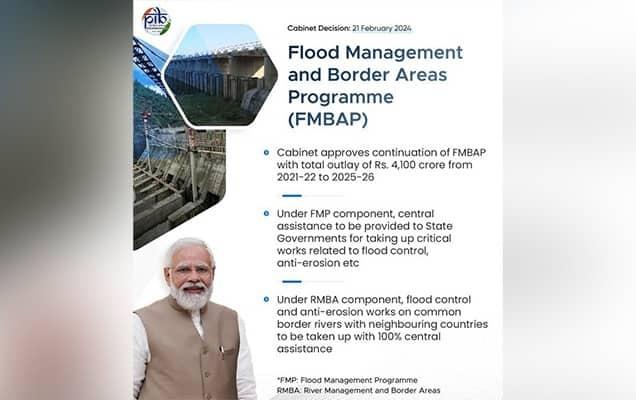
- 22 Feb 2024
Why is it in the News?
Recently, the Union Cabinet approved the continuation of “Flood Management and Border Areas Programme (FMBAP)” with a total outlay of Rs. 4,100 crore for a period of 5 years from 2021-22 to 2025-26.
About the Flood Management and Border Areas Programme (FMBAP):
- The FMBAP Scheme is being implemented throughout the country for effective flood management, erosion control and anti-sea erosion and to help in maintaining peace along the border.
- The scheme benefits towns, villages, industrial establishments, communication links, agricultural fields, infrastructure etc. from floods and erosion in the country.
- The catchment area treatment works will help in the reduction of sediment load into rivers.
- The Scheme aims at the completion of the ongoing projects already approved under FMP.
The Scheme has two components:
- Under the Flood Management Programme (FMP) component of FMBAP with an outlay of Rs. 2940 crore, central assistance will be provided to State Governments for taking up critical works related to flood control, anti-erosion, drainage development and anti-sea erosion, etc.
- The pattern of funding to be followed is 90% (Centre): 10% (State) for Special Category States (8 North-Eastern States and Hilly States of Himachal Pradesh, Uttarakhand and UT of Jammu & Kashmir) and 60% (Centre):40% (State) for General/ Non-Special Category States.
- Under the River Management and Border Areas (RMBA) component of FMBAP with an outlay of Rs. 1160 crore, flood control and anti-erosion work on common border rivers with neighbouring countries including hydrological observations and flood forecasting, and investigation & pre-construction activities of joint water resources projects (with neighbouring countries) on common border rivers will be taken up with 100% central assistance.
- The Scheme has the provision of incentivizing the States which implement flood plain zoning, recognized as an effective non-structural measure for flood management.
Importance:
- While the primary duty of flood management lies with the State Governments, the Union Government actively promotes and advocates for the adoption of modern technology and innovative approaches.
- Additionally, projects executed under the RMBA component serve to safeguard critical installations of security agencies and border outposts situated along border rivers from the perils of floods and erosion.
- Furthermore, the scheme includes provisions for incentivizing states that implement flood plain zoning, a recognized and effective non-structural measure for flood management.
ENCORE (NewsOnAIR)

- 03 Nov 2023
Why in the News?
Recently, the Election Commission of India (ECI) has developed in-house software named ‘ENCORE’ designed for efficient candidate and election management.
About ‘ENCORE’:
- The Election Commission of India has designed in-house software for complete Candidate and election management through ‘ENCORE’ which stands for Enabling Communications on Real-time Environment.
- This provides a seamless facility for Returning Officers to process candidate nomination, affidavit, Voter turnout, counting, results and data management.
- The ENCORE counting application is an end-to-end application for returning officers to digitize the votes polled, tabulate the round-wise data and then take out various statutory reports of counting.
- An additional application, the ENCORE Scrutiny Application, allows Returning Officers to scrutinize online nominations submitted by candidates.
- This process involves verifying and marking the status of nominations as Accepted, Rejected, or Withdrawn, facilitating the creation of the final list of contesting candidates and symbol assignment.
- The ECI offers an online portal for candidate nomination and affidavit submission.
- Candidates can create accounts, complete nomination forms, submit security deposits, and plan their visits to the Returning Officer through this portal.
- The Candidate Affidavit portal is designed to display information about a candidate's financial assets and liabilities, offering transparency in candidates' financial disclosures.
- The ENCORE Nodal App serves as a platform for various government departments, including fire, education, police, environment, and CPWD, to issue 'no objection' certificates.
- These certificates are required before granting permission for political parties or candidates to hold rallies, road shows, and meetings, ensuring that all necessary clearances are obtained before public events.
SC pulls up Bhopal municipal corporation for flouting Solid Waste Management Rules (DownToEarth)
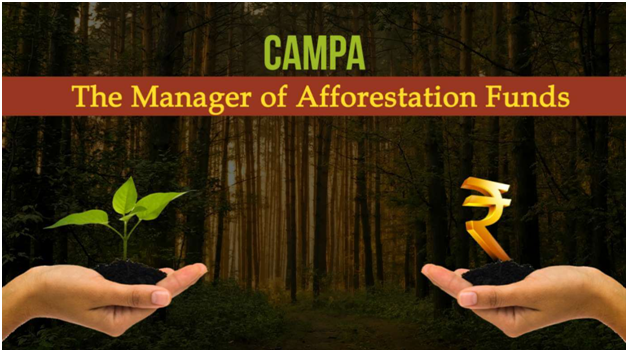
- 05 Dec 2023
Why is it in the News?
There is non-compliance with the provision of the Solid Waste Management Rules, 2016 by the Bhopal Municipal Corporation, the Supreme Court observed December 1, 2023 after going through the affidavit filed by the corporation.
What is About Compensatory Afforestation Fund Management and Planning Authority (CAMPA)?
- The Supreme Court of India, in 2001, mandated the creation of the Compensatory Afforestation Fund and the Compensatory Afforestation Fund Management and Planning Authority (CAMPA).
- Initially, an ad-hoc CAMPA was established in 2006 to manage the Compensatory Afforestation Fund.
- (CAMPA) are meant to promote afforestation and regeneration activities as a way of compensating for forest land diverted to non-forest uses.
- National CAMPA Advisory Council has been established as per orders of The Hon’ble Supreme Court with the following mandate:
- Lay down broad guidelines for State CAMPA.
- Facilitate scientific, technological and other assistance that may be required by State CAMPA.
- Make recommendations to State CAMPA based on a review of their plans and programmes.
- Provide a mechanism to State CAMPA to resolve issues of an inter-state or Centre-State character.
CAMPA Act:
- To address the loss of forest area and ensure sustainability, the Government of India introduced the CAMPA (Compensatory Afforestation Fund Management and Planning Authority) Act.
- This legislation establishes the National Compensatory Afforestation Fund in the Public Account of India and a State Compensatory Afforestation Fund in the Public Account of each state.
- These funds receive payments for compensatory afforestation, net present value of forests (NPV), and other project-specific payments.
- The National Fund gets 10% of these funds, while the State Funds receive the remaining 90%.
- As per the Act, companies diverting forest land must provide alternative land for compensatory afforestation.
- For afforestation purposes, companies are required to pay for planting new trees in the alternative land provided to the state.
MANAGEMENT & ENTREPRENEURSHIP AND PROFESSIONAL SKILLS COUNCIL (Business Standard)

- 27 Oct 2023
What is the News ?
A Memorandum of Understanding (MoU) was recently signed by the Management & Entrepreneurship and Professional Skills Council (MEPSC) and Magic Bus India Foundation, a prominent non-profit in the education and skilling sector.
Facts About:
MEPSC is a horizontal Sector Skill Council (SSC) that was established using a unique Public-Private Partnership (PPP) model in 2013 and registered as a Section-8 (Not for Profit Company) under the Companies Act.
The Ministry of Skill Development has been providing guidance to the Council during its operations.
The only organization promoting it is the All India Management Association (AIMA), which is the highest authority for the management profession in India.
MEPSC receives support from the National Skill Development Corporation (NSDC) and is acknowledged as an awarding body by the National Council for Vocational Education and Training (NCVET), the skills regulator.
Over the next ten years, MEPSC aims to train and certify about 4.75 lakh trainees, create and develop 50 Qualifications Packs (QPs)/National Occupational Standards (NOS), and train over 550 trainers.
It will take the lead on skill development programs in five major areas, including:
- Assessment and training
- Professional skills (including Security)
- Non-Teaching job roles in the education sector
- Entrepreneurship
The MEPSC Board of Directors is made up of several well-known and experienced business leaders, academics, NSDC, AIMA, and Ministry officials.
